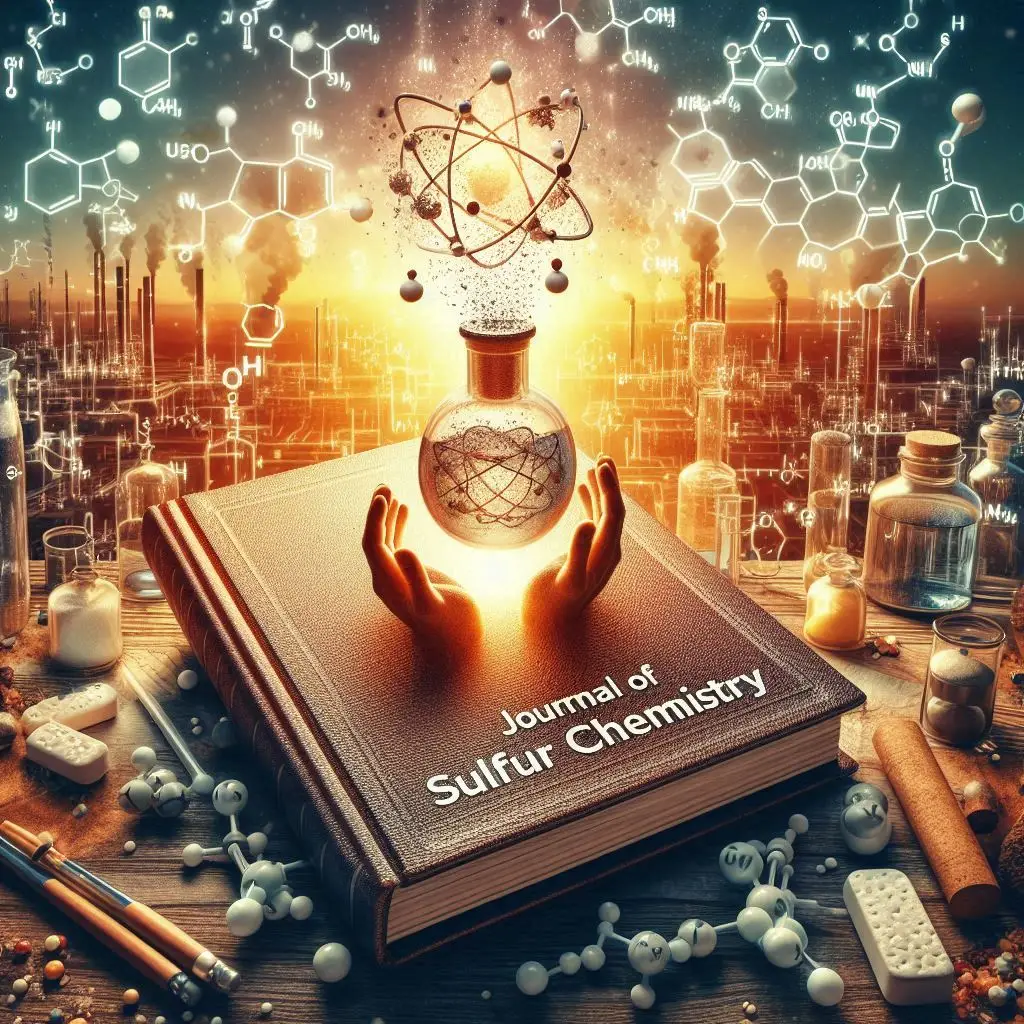
Journal of Sulfur Chemistry Impact Factor Chemical Formula Uses
Introduction
The Journal of Sulfur Chemistry is a well-recognized scientific publication dedicated to the study of sulfur and its compounds. Sulfur plays a crucial role in multiple industries, including agriculture, pharmaceuticals, petroleum refining, and chemical manufacturing. Understanding sulfur chemistry is vital for innovation in these fields. This article will explore the impact factor of the journal, sulfur’s chemical formula, and its industrial uses.
Journal of Sulfur Chemistry Impact Factor
The Journal of Sulfur Chemistry publishes high-quality research on the synthesis, reactivity, and applications of sulfur compounds. One of the key metrics used to evaluate the credibility of a scientific journal is its impact factor, which reflects the average number of citations its articles receive over a specific period.
As of the latest available data, the impact factor of the Journal of Sulfur Chemistry is considered moderate within the field of chemical sciences. While it may not rank among the highest-impact journals, it remains a valuable resource for researchers and industry professionals focused on sulfur-based chemistry.
Scientific journals with a niche focus, such as sulfur chemistry, often have a lower impact factor compared to more generalized chemistry publications. However, their importance lies in their specialization, providing in-depth insights that are essential for advancements in various industries.
Sulfur Chemical Formula
The chemical element sulfur is represented by the symbol S and has an atomic number of 16. It belongs to Group 16 (Chalcogens) in the periodic table and exhibits non-metallic properties.
Sulfur is most commonly found in nature as S₈, which is a cyclic molecule composed of eight sulfur atoms. This form is known as elemental sulfur, and it appears as a yellow crystalline solid. Sulfur can form various chemical compounds, including:
- Sulfides (e.g., Iron Sulfide – FeS)
- Sulfates (e.g., Calcium Sulfate – CaSO₄)
- Sulfur Dioxide (SO₂) and Sulfur Trioxide (SO₃) – Key components in the production of sulfuric acid
- Organic Sulfur Compounds (e.g., Thiols (-SH), Sulfides (-S-), and Sulfoxides (-SO-))
These compounds are widely used in chemical manufacturing, food preservation, medicine, and environmental applications.
Sulfur Uses
Sulfur is a versatile element with applications across multiple industries. Here are some of its most significant uses:
Agriculture and Fertilizers
Sulfur is a key ingredient in fertilizer production. It enhances soil health and supports plant growth by contributing to the synthesis of amino acids and proteins. Sulfur-based fertilizers, such as ammonium sulfate and elemental sulfur, help increase agricultural productivity.
Chemical Industry and Sulfuric Acid Production
Sulfur is primarily used to manufacture sulfuric acid (H₂SO₄), which is one of the most widely produced industrial chemicals in the world. Sulfuric acid is essential in:
- The production of pharmaceuticals
- The manufacturing of detergents and dyes
- Chemical synthesis and industrial processing
Petroleum Refining
Sulfur is naturally present in crude oil and must be removed during refining to meet environmental regulations. The hydrodesulfurization process eliminates sulfur from fuels, reducing sulfur dioxide emissions, which contribute to acid rain and air pollution.
Rubber Industry and Vulcanization
The vulcanization of rubber involves adding sulfur to raw rubber to improve its durability, elasticity, and resistance to wear. This process is critical in the manufacturing of tires, gaskets, and industrial rubber products.
Pharmaceuticals and Medicine
Sulfur-containing compounds play a crucial role in medicinal chemistry. Sulfa drugs (sulfonamides) are a class of antibiotics used to treat bacterial infections. Additionally, sulfur is used in the production of ointments, creams, and acne treatments due to its antimicrobial properties.
Pesticides and Fungicides
Sulfur is widely used in pesticides and fungicides to protect crops from fungal infections, mites, and insects. Sulfur-based fungicides are commonly used in vineyards, orchards, and organic farming as an alternative to synthetic chemicals.
Personal Care and Cosmetics
Sulfur is an active ingredient in soaps, shampoos, and skincare products due to its ability to treat dandruff, acne, and skin conditions such as eczema. It is particularly effective against fungal and bacterial infections.
Conclusion
The Journal of Sulfur Chemistry is a significant publication in the scientific community, providing valuable research on sulfur and its compounds. With an impact factor that reflects its reach and influence, the journal remains an essential resource for researchers exploring the many applications of sulfur chemistry.
Sulfur, as an element, holds immense importance in various industrial and scientific fields. Its ability to form diverse chemical compounds enables its use in fertilizers, pharmaceuticals, petroleum refining, and numerous other industries. Whether in agriculture to enhance crop growth, in the chemical industry for producing essential compounds, or in medicine for treating infections, sulfur’s role is indispensable.
Beyond its traditional applications, ongoing research in sulfur chemistry continues to expand its potential. Scientists are investigating new sulfur-based materials, environmentally friendly sulfur compounds, and innovative applications in nanotechnology and energy storage. This highlights the continuous evolution and growing significance of sulfur-related studies.
As industries and researchers seek sustainable and efficient solutions, sulfur chemistry remains a crucial field of study. The Journal of Sulfur Chemistry serves as a platform that fosters collaboration and knowledge-sharing, ensuring that the advancements in sulfur science continue to benefit various sectors worldwide. For anyone interested in sulfur-related research, this journal is an invaluable source of information and innovation.

